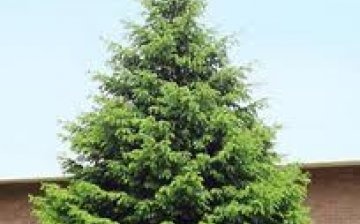Common fir
The common fir is a powerful, monoecious, evergreen tree with a beautiful cone-shaped crown that starts from the base of the trunk. The trunk is covered with gray bark, which in some species is thin and smooth until old age, while in others it is thick and deeply fractured.
The common fir has a powerful taproot system that goes deep into the soil. The needles are soft, flat, they are located spirally on the shoots, and sometimes comb on both sides of the shoot, due to twisting of the needles at the base. The characteristic feature of common fir is the upright cones, which ripen in the first year and crumble to release seeds.
The cone of the crown of the fir is slender, narrow, clearly outlined. The green of the needles is dark, shiny, it has white stripes of stomata on the underside, which give a splendor and splendor to the appearance of firs. Common fir is used in landscape gardening. Fir looks good in alley and group plantings in combination with maples, white-trunk birches, velvet and a variety of shrubs. Fir is also used to create living walls without clipping. Long-lasting needles of fir branches are an advantage when used in floristry. Fir goes well with other large trees (pine, spruce, larch). Common fir blooms in May or early June.
Fir contains camphor, essential oil, tocopherol (vitamin E), ascorbic acid, resins, phytoncides, tannins. The bark, needles and cones of fir are used in folk medicine in the form of aqueous infusions, decoctions and tinctures.



